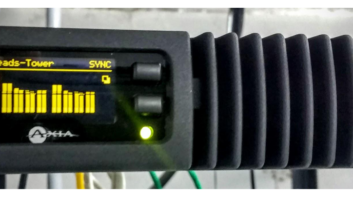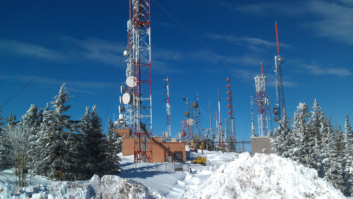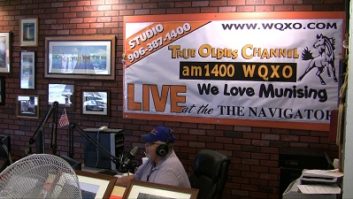 The author is senior solutions consultant for the Telos Alliance.
The author is senior solutions consultant for the Telos Alliance.
This article appeared in Radio World’s “Trends in Codecs and STLs for 2020” ebook.
Radio World reports there are more than 22,000 licensed radio stations in the United States. Of these, more than 15,000 are tallied by the traditional accounting of full-power AM and FM stations. Low-power FMs, translators and FM boosters add about 7,000 more.
The vast majority of these stations employ some kind of audio link from the studio or other origination point to the transmitter site. That’s a lot of studio-transmitter links.
Changing STL Technologies
What kind of STL was used by the first radio station where you worked? Forty years ago our main STL choices were these:
- Equalized program lines from your local phone company;
- Discrete (L/R) 950 MHz (band) TX/RX radios — one for mono, two for stereo;
- Multiplex (MPX) 950 MHz (band) TX/RX radios.
More choices arose during the 1980s — digital choices — such as the QEI CAT-LINK, which transported FM MPX over a T1 or E1 telco link, and Dolby’s 950 MHz STL transmitter/receiver pair. More audio data-reduction codecs allowed further choices in the 1990s, both in wired and wireless STL systems, including stereo and even multichannel digital STL systems.
[Check Out More of Radio World’s Ebooks Here]
Most of these used either T1/E1 telco circuits or worked in the 950 MHz band in the United States, and other UHF bands for other countries. The 21st century brought upgraded digital RF STLs as well as a variety of budget-priced analog composite systems.
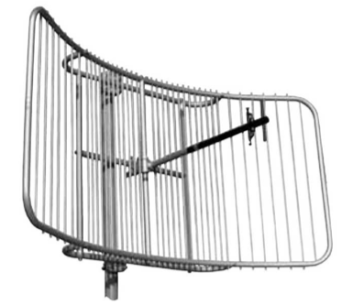 By the end of the 20th century, both wired and wireless STL systems began having some serious challenges. Telcos became less interested in supplying equalized program circuits — so much so that most stopped accepting orders for new circuits. And, in major markets — often with clustered tower sites — the 950 MHz RF band had no room for additional users.
By the end of the 20th century, both wired and wireless STL systems began having some serious challenges. Telcos became less interested in supplying equalized program circuits — so much so that most stopped accepting orders for new circuits. And, in major markets — often with clustered tower sites — the 950 MHz RF band had no room for additional users.
Today, it’s nearly impossible to even order new T1/E1 service, and observant engineers can easily see the deterioration of their telco’s outside wire plant.
In some markets, ISDN usage became “unlimited,” so a few broadcasters employed either dial-up or “nailed-up” ISDN service with ISDN codecs at each end. These days, ISDN service is withering and new connections are generally not available.
Despite the disappearance of old telco services and the congestion in some areas of the 950 MHz band, engineers actually have more STL choices than ever before.
The key to new STL options is internet protocol — IP. And the best news about IP is that it can be transported in more ways than you might think.
Let’s edit and append our list to delete nonviable options and add new options:
- Equalized program lines from your local phone company;
- Discrete (L/R) 950 MHz (band) TX/RX radios — one for mono, two for stereo;
- Multiplex (MPX) 950 MHz (band) TX/RX radios;
- ISDN codec (came and went over a 30 year period);
- T1/E1 link (unavailable for new installation and dying quickly);
- Digital, discrete (L/R) multichannel 950 MHz (band) TX/RX radios;
- Satellite delivery (L/R) using audio codecs;
- Discrete (L/R) audio using IP audio codecs with appropriate IP connectivity;
- Public internet;
- Fiber;
- Cable;
iii. DSL;
- 4G LTE carrier;
- Wireless ISP;
- Satellite;
- Managed, wired IP link;
- Private, wireless IP link;
- Linear, discrete (L/R) audio using AoIP (Livewire+, AES67) with appropriate IP connectivity;
- Managed, wired IP link;
- Private, wireless IP link;
- FM Multiplex (MPX) using µMPX bitrate-reduced multiplex technology (for FM);
- Public Internet;
- Fiber;
- Cable;
iii. DSL;
- 4G LTE carrier;
- Wireless ISP;
- Satellite;
- Managed, wired IP link;
- Private, wireless IP link;
- FM Multiplex (MPX) using linear multiplex technology (for FM);
- Managed, wired IP link;
- Private, wireless IP link.
That’s quite a list of options we have now. And, yes, several sub-items regarding IP transport are duplicated. However, that’s to make a point: As our society’s reliance on IP connectivity grows, so also grow our options to acquire and use it on a reliable and professional level.
Key Criteria
We engineers generally have three key criteria for our studio-transmitter links:
- We’re seeking at least five 9s of reliability. That translates to about 26 seconds per month or 5 minutes and 15 seconds of downtime over an entire year;
- Audio quality. Every moment of audio that we broadcast to the public will traverse our STL. There’s no room for any compromise here; it really must be perfect;
- We should consider both capital expense and operational expense (cap-ex and op-ex).
Let’s consider each of these three criteria, comparing traditional and IP-based STL systems.
Purpose-Engineered STL Systems
Purpose-built RF STL radio systems are generally considered to be reliable. They tend to work well 24/7/365 throughout their service life expectancy of perhaps 10 to 20 years. They tend to be thoughtfully engineered and well-built.
They should be, as some of these STL systems cost well over $15,000 for just the radios. Add-ons may include additional audio channels, ancillary data, serial transport, etc. Add to this the cost of antennas and coax cable for effective service at 950 MHz and a full-featured, purpose-built radio STL system can top out at $30,000 or more, plus tower crew installation. A full backup system will likely double that capex expense. The good news is that there is likely little or no continuing operation expense (op-ex), unless tower space and/or building rooftop rental is required for a given installation.
Lower-end RF STL radio systems can cost far less than the example above. A basic FM MPX STL radio pair can be purchased for under $4,000, though the antenna/coax/placement expenses would be similar to those above.
Audio quality of RF STL systems can range from “acceptable” to “pristine.” Purely analog RF STLs balance between wideband system noise and demodulated distortion. Any distortion of any type in the system will end up being demodulated at the STL receiver and retransmitted by the main FM signal. Traditional digital RF STL systems deliver crystal-clear audio with a very low noise floor. However, many of them are limited to about 15 kHz of top-end audio transport. The brick-wall filtering required is, indeed, audible on some of these systems when A/B compared to 20 kHz STL systems in which only the FM audio processor is doing pilot-protection filtering.
Finally, unless the digital RF STL offers linear audio transport, there will be some kind of psychoacoustic coding algorithm involved. And most likely the aggressive, multiband FM audio processor will follow this coded audio in the chain. The net effect is exaggeration of any coding artifacts in the station’s audio.
Some key benefits of 950 MHz RF STL systems are:
- Robust, reliable operation;
- Independence from third-party service providers;
- Op-ex costs ranging from “reasonable” to zero;
- Excellent expected equipment lifespan;
- Digital systems that offer very clean audio with low noise.
Some downsides to 950 MHz RF STL systems include:
- RF congestion that implies interference potential;
- Lack of RF coordination, which continues to result in occasional problems;
- Susceptibility to malicious interference;
- Higher capex costs, potentially much higher;
- One-way communication — no inherent return path;
- Psychoacoustic coding algorithms producing artifacts that are exaggerated by aggressive audio processing;
- Audio sampling (bit depth) likely only 16 bits.
Purpose-built wired STL systems typically depend on an incumbent telco provider for T1/E1 service or some other tariffed connection. These have had some assurance of reliability from the telco and, at least in the past, were given priority for clearing any faults. Indeed, before telcos became more interested in providing IP connections, such dedicated circuits as T1s and the like were considered very reliable, with “backhoe fade” being the most prominent risk. These days, anecdotal evidence suggests that T1 and similar services are no longer a priority for incumbent carriers.
Some key benefits of purpose-built, wired STL systems are:
- Robust, reliable operation;
- Immunity from malicious interference;
- A variety of user-end connection options — audio, data, POTS extension, etc.;
- Excellent expected equipment lifespan;
- Two-way communication with optional equipment.
Some downsides of purpose-built, wired STL systems include:
- Dependence upon telco service providers;
- Poorly-maintained telco cable plant that portends more faults;
- Higher capex costs, potentially much higher with optional add-ons;
- Psychoacoustic coding algorithms producing artifacts that are exaggerated by aggressive audio processing;
- Audio sampling (bit depth) likely only 16 bits.
Similar to digital RF STL systems, the audio is often brick-wall filtered at 15 kHz, with the attendant audible coloration of such filters. Also, psychoacoustic coding algorithms deteriorate the audio slightly, with exaggerated effect after the FM processing that follows.
IP-Based STL Systems
IP-based STL systems can be generally divided into two categories — linear and “coded.” Another disambiguation of IP-based STLs could be “wired” and “wireless.” However, we can also use wired and wireless IP transport methods at the same time, or with one backing up the other.
Linear IP STL systems will transport digital audio perfectly with the same 1s and 0s that go into such an STL being delivered to the far end. Twenty-four-bit, 48 kHz-sampled linear audio typically requires about 2.5 Mbps to transport. While this audio delivery is basically perfect, it typically depends on having zero packet loss. This zero-error scenario is often provided through redundant IP paths between the endpoints.
Coded systems will use some kind of coding algorithm to reduce the bitrate required for transport. The audio codecs in such STL systems are generally configurable from a wide range of bit rates, and perhaps even a selection of coding algorithms. Bitrates that are appropriate for broadcast audio range from about 128 kbps up to 756 kbps, depending on the chosen codec. Modern coding algorithms offer some “error concealment.” For example, the AAC family of algorithms claims inaudible error concealment with up to 20% of random packet loss.
 Linear IP STL systems are particularly good for broadcasters in that they are absolutely transparent to the audio. Every sample of audio data from the studio arrives exactly the same at the transmitter site. The IP transport path must provide excellent packet delivery performance in a linear IP audio system. Indeed, a common approach to implementation is to simply extend the audio over IP network at the studio out to the transmitter site. With this approach we assume the AoIP audio channels we need at the transmitter already exist on the studio’s AoIP network. By providing a qualified IP path to the transmitter site, we can “subscribe” to the desired audio channel(s) from the studio.
Linear IP STL systems are particularly good for broadcasters in that they are absolutely transparent to the audio. Every sample of audio data from the studio arrives exactly the same at the transmitter site. The IP transport path must provide excellent packet delivery performance in a linear IP audio system. Indeed, a common approach to implementation is to simply extend the audio over IP network at the studio out to the transmitter site. With this approach we assume the AoIP audio channels we need at the transmitter already exist on the studio’s AoIP network. By providing a qualified IP path to the transmitter site, we can “subscribe” to the desired audio channel(s) from the studio.
One example of such a system is at Delta Radio in Greenville, Miss. The studio and rack room were fully Livewire AoIP already. A robust 5.8 GHz IP-radio link was established to the transmitter site, 13 miles away.
The only audio equipment required at the transmitter site, apart from the IP radio, is an Axia xNode. Four linear stereo channels are received there via the Axia xNode. For remote monitoring, there are four linear stereo return channels over the same IP connection. All this audio is 20 kHz in bandwidth, using 48 kHz digital sampling and 24 bits per sample. The aggregate data rate across the IP radio link is about 10 Mbps in each direction. A thorough explanation of this system, including IP radio performance considerations, is available in this article.
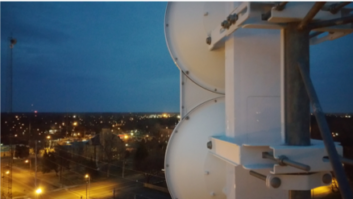 Other examples of IP-radio STL systems are becoming more and more commonplace, from stations in rural Australia and small Pacific islands to the largest radio markets in the U.S.
Other examples of IP-radio STL systems are becoming more and more commonplace, from stations in rural Australia and small Pacific islands to the largest radio markets in the U.S.
IP radios may be licensed or unlicensed, depending on the RF band selected for operation. While not an absolute guarantee against interference, licensed IP radio paths tend to be secure and free from such interference. An RF path and interference study is required as part of the licensing process. Unlicensed IP radio pairs are likely to work well in rural or uncongested areas, but careful consideration and backup planning are suggested for unlicensed operation in built-up urban locales.
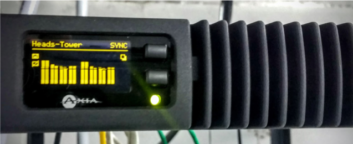 Coded IP STL systems offer several advantages in terms of bandwidth requirements and recovery from packet loss. While a linear IP STL, as discussed above, needs a near-perfect IP transport path to work properly, a coded-based IP STL is less stringent. Codecs generally offer more packet buffering, error concealment and reordering of packets arriving out-of-order than a linear system. While audio codecs themselves will cost more than, say, a simple “node” AoIP endpoint, they offer more flexibility in their IP connection’s requirements. For example, using audio codecs at each end, one may install an IP radio link pretty much “out of the box” and have a working STL. One may also use public internet for either the main or backup link between codecs.
Coded IP STL systems offer several advantages in terms of bandwidth requirements and recovery from packet loss. While a linear IP STL, as discussed above, needs a near-perfect IP transport path to work properly, a coded-based IP STL is less stringent. Codecs generally offer more packet buffering, error concealment and reordering of packets arriving out-of-order than a linear system. While audio codecs themselves will cost more than, say, a simple “node” AoIP endpoint, they offer more flexibility in their IP connection’s requirements. For example, using audio codecs at each end, one may install an IP radio link pretty much “out of the box” and have a working STL. One may also use public internet for either the main or backup link between codecs.
Another IP-based STL method has appeared in the past few years. It’s an FM MPX transport codec over IP. This is similar in connection to the audio chain as an MPX RF STL; the FM audio processor is placed at the studio, and the full MPX signal is carried to the transmitter site where it’s wired to the FM exciter directly. These MPX over IP systems also appear in both linear and coded varieties.
Linear MPX STLs require anywhere from 3 to 7 Mbps to faithfully sample and transport an FM processor’s MPX output. These systems may not offer any error correction but usually do offer connections for dual-path redundancy.
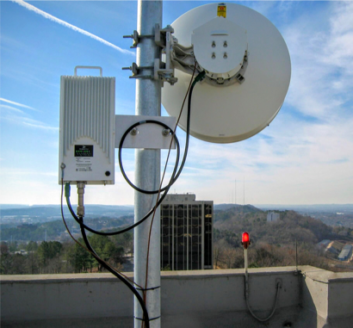 An interesting application of MPX-over-IP technology is to use one FM audio processor to feed identical audio to several FM transmitter sites. There’s no need for separate FM audio processors at each site.
An interesting application of MPX-over-IP technology is to use one FM audio processor to feed identical audio to several FM transmitter sites. There’s no need for separate FM audio processors at each site.
More recently, an interesting and useful method has arrived for coding the FM MPX signal to transport it at a much lower bitrate.
The trade name is µMPX (or Micro-MPX). This proprietary method does not use psychoacoustic coding. Rather, it’s a novel application of mathematical data reduction that is well suited for the FM MPX signal. It is “well-suited” because artifacts of the µMPX algorithm tend to fall in time and frequency where they don’t affect the perceived audio. And, unlike psychoacoustic codecs, precise peak control is maintained through a µMPX STL system. The minimum bitrate for µMPX systems is 320 kbps, with a maximum of 576 kbps. The algorithm also offers dual IP path redundancy as well as forward error correction to rebuild occasional lost packets.

The IP transport(s) for µMPX can be Public Internet, IP radios, Wireless ISP, etc. or any combination of those.
Some key benefits of IP STL systems are:
- Highest audio quality using 20 kHz (48 kHz/24-bit) linear audio;
- Lower-performance IP connections can use coded audio;
- It’s likely the lowest cost option, even with redundant IP path cost;
- Robust, reliable operation with redundant IP paths;
- Additional uses thanks to IP connectivity, e.g. monitoring, backup, disaster recovery, etc.;
- Two-way communication inherent in IP connections and AoIP;
- One-to-many distribution for single-frequency networks;
- µMPX distribution that offers excellent MPX performance at modest bitrates.
Some downsides of IP STL systems include:
- IT networking skills are needed for most robust configurations;
- Where applicable, psychoacoustic coding algorithms result in artifacts which are exaggerated by aggressive audio processing (does not apply to linear configurations);
- Ultimate reliability is based on having at least two IP paths for redundancy.
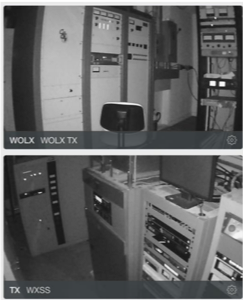 IP-based STL systems easily offer the most flexibility in terms of connection options. If a private, high-quality IP link, using enterprise-grade IP radios, for example, can be obtained, then two-way linear audio is the best option for perfect audio transport. That same high-quality IP connection can also be used for remote transmitter control, remote backup, disaster recovery options, security video surveillance, remote telephony and so much more. If only public internet or lesser-grade IP radio paths are available, then coded audio at the highest available bitrate makes sense.
IP-based STL systems easily offer the most flexibility in terms of connection options. If a private, high-quality IP link, using enterprise-grade IP radios, for example, can be obtained, then two-way linear audio is the best option for perfect audio transport. That same high-quality IP connection can also be used for remote transmitter control, remote backup, disaster recovery options, security video surveillance, remote telephony and so much more. If only public internet or lesser-grade IP radio paths are available, then coded audio at the highest available bitrate makes sense.
In either case, having more than one IP path is truly important for redundancy. We know that packet loss and occasional outages from internet service providers can be a problem.

The transactional business world, as well as the worlds of social media and entertainment, are now dependent on IP connectivity. For broadcast engineers this widespread dependency implies competitive low cost and wide availability of IP transport. Moreover, this active marketplace of IP equipment and services is delivering flexible system solutions; redundant systems and connections; and generally better audio performance that we’ve heard before.
Wrapping It Up
Radio broadcasters truly have more options than ever for their studio-to-transmitter link technology. Traditional 950 MHz RF links work well enough in most situations. Analog systems do exhibit some noise, while digital 950 MHz links may be constrained by filters and less bit-depth, or by audio coding artifacts. IP-based solutions afford engineers more options, including the possibility of the most pristine linear audio link they’ve ever experienced.
